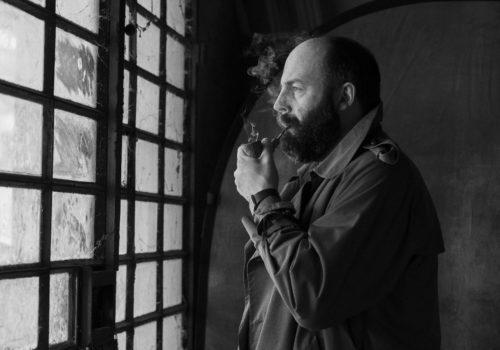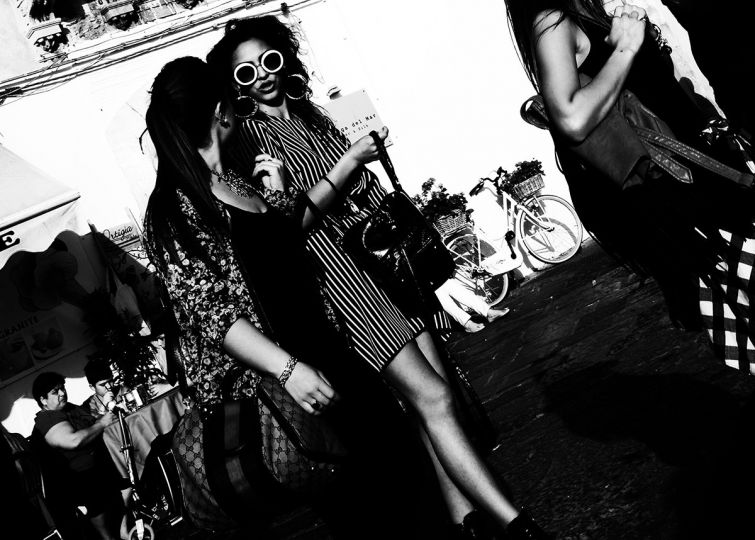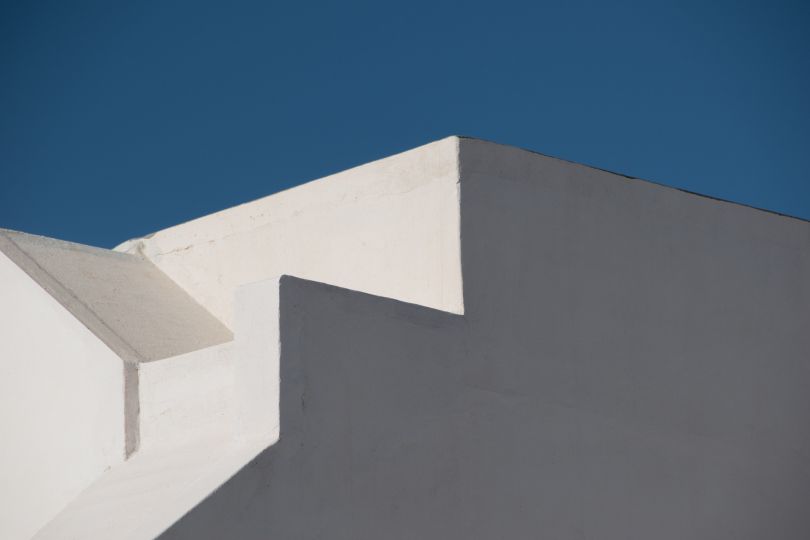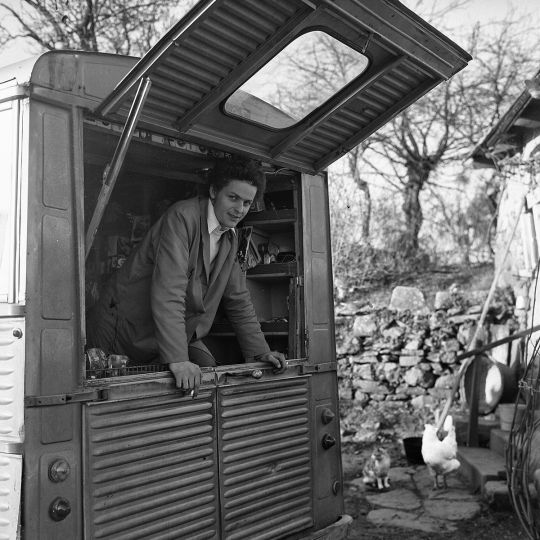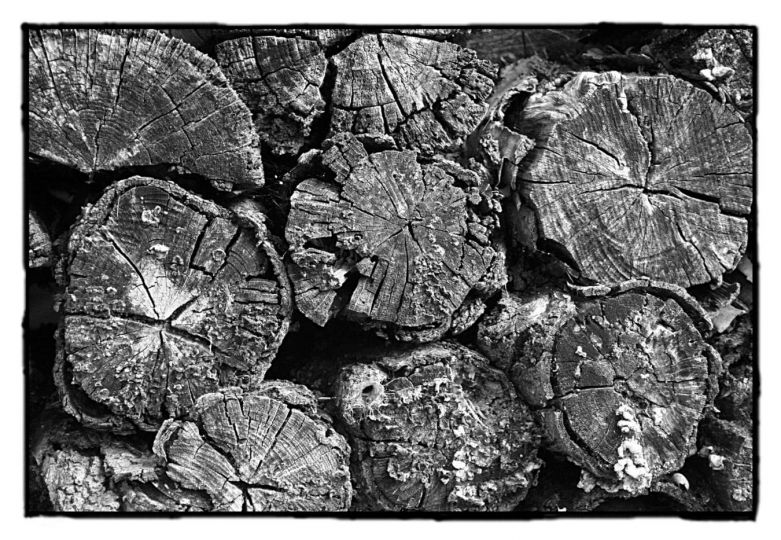Hôtel de la Vie
Photographic projects are generally believed to become popular when they have reached their final stage, when they are ready to be watched, studied, analysed, criticised, observed, in other words when they are ready for the world.
But, this time, let’s move a step backwards (just in order to move forwards!) and interview Marco Cheli, the photographer who is well-known for his reportages as well as for his work Fortza Paris (bit.ly/3gB94ci), but not yet for his black and white photographic portraits, which are the integral part of his new project named Hôtel de la Vie.
The latter deals with his first experiments in the photographic portrait domain. Why are we focusing on them? Because we are interested in getting to know about the reasons why a photographer who has already found his own style is stimulated to go further.
What follows is Marco Cheli’s interview.
Marco Cheli, you are both a graphic designer and a photographer. You were born in Siena and you have already gained a massive background in the world of images thanks to reportage projects of a certain level and in particular thanks to your successful work Fortza Paris, which has become an editorial publication as well as a travelling exhibit.
Moreover, you are represented by Parallelozero agency. So we are wondering why you have felt like starting over again to study and challenging yourself with a new photographic genre – the photographic portrait, in your case – at the age of 43.
Well, because I am that sort of person who gets bored quickly… So I often need to look for something new to test myself. I have always looked at the portrait in a detached way, since I thought it was a dull dimension in which a blend of technique and technology did 99% of the job leaving the remaining 1% to a finger click. You just take a pretty model, nearly undressed, you arrange a light pattern and then you just click. Maybe because our world is full of scoundrels who show off certain body parts hiding themselves behind the excuse of artistic nude. This fact has kept me away from the portrait world so far, surely due to my superficiality.
What do you want to “take out” from your models when you are photographing them?
Nothing intrinsically linked to childhood traumas in the subconscious of the individual… Jokes aside, I have no presumption of delving into who knows what depths of the human psyche. My real satisfaction derives from my ability to make the individual feel comfortable, which is not easy at all, especially because I do not feel comfortable either.
Secrets, lies, truth, restlessness, simplicity, cunning, beauty, sorrow. They are all crucial ingredients of your first experiments. What else do you long for?
I would like the individuals to recognise themselves in my shots. I never show them my work until the final editing, which consists of 4/5 shots. At that point I consider their reaction. In my score scale the expression “Beautiful picture” means failure. On the contrary, a smile means that they recognise themselves in that shot and consequently I feel proud.
What do you like and what do you still not about your early shots?
I am a very critical judge so I will tell you what still does not convince me. I feel that there is still little of myself in them. I have not a clue about how long this initial training phase will last, but, in photography, studying also means copying, at least at the beginning. When I decided to immerse myself in this project, what I found most difficult was the choice of the right person who would become my mentor. I had been following Eolo Perfido for a long time because I was really fond of his portraits. Being brave enough to contact him was really hard but I did. A critical eye would surely notice the mannerism of my early phase.
What do you aspire to?
Rather than talking about what I aspire to I would rather talk about my goal, which is finding my own style characterised by peculiar features which people will easily recognise in my work. Only at that point we will not talk about “training” any more.
What is the shot that has made you say: “Maybe I nailed it!”
I have never said that.
Who are the individuals you choose to portray?
I started with close friends and acquaintances. I knew they would not send me to hell. I am actually broadening my action field trying to spot people with unique physical features. Talking about that, if somebody who is reading this interview might be interested in it, I will take into account peculiar and curious faces, so please contact me.
Nowadays social media favours an initial approach with the individual you are interested in photographing. The computer screen eliminates the embarrassment you used to feel when you stopped people in the street and asked them if they felt like being photographed. In my modus operandi I would like to break this pattern, even though it is undoubtedly more practical. Part of the exercises I am doing in this training phase are based on how to make yourself credible.
And your location choice? It is bare, as if you wanted to challenge yourself even more, only with faces.
I have set up a small posing room in my graphics studio. It is quite small, as I said, so I try to get the most out of it. But it is enough in this initial phase in which I am working with panels and a single light source, either natural or artificial. I am actually beginning to work with poor scenery very cautiously, with the future aim of approaching photographic portraits set in a specific location.
The environment you use for your shots is quite bare. Is it a strategy?
The individual I portray is deprived of any details as well. Neutral clothes, nothing that might distract from the expression, the pose, the hands, all features that I have learnt to be crucial in the expressive power of a photograph. I am just at the beginning of my journey which I would like to turn into something more creative, but I am not in a hurry and I need to strengthen a working method inspired by the old style of last century’s great masters of photography.
Is there a before and an after in your journey within the portrait?
Before a lot of mess and curiosity, at the moment a lot of shots and books, after the objective of working with the analogue. I would like to start working with a view camera, but this is another story. Anyway, I do not want to reject my past. Indeed, thanks to the reportage technique I gave life to my long-term project centred on the culture and traditions in Siena, my city. I just have to find the right interpretation to do so through the photographic portrait. So far I have only been gathering the individuals I have portrayed on my Instagram profile called Hôtel de la Vie.
Why have you chosen such a name, Hôtel de la Vie?
In this phrase Hôtel de la Vie, Vie stands for mankind. One of my dreams is to become the owner of a small hotel in the heart of my town, a place where people come and go. I feel really intrigued by this aspect of the journey, namely meeting people that you will never see in your life again. I started to look at my posing room like a room in my small hotel, where people just stay for the time of a portrait. But, then, the portrait stays forever, it blocks the flow of time. It could be a coincidence but during my numerous journeys, which I have been lucky to go on, I have always made friends with the people who ran the accommodation. After many years I am still in touch with my Cuban, Burmese, Moroccan friends, all people who I just interacted with for a few days.
A nerd detail I cannot but ask you about. What devices do you use and what is your favourite light pattern?
I use a mirrorless full frame Sony Alpha 7III camera always stuck on a tripod. I had always been keen on fixed optical cameras but I had to change my mind not only for practical reasons but because they have allowed me to see the work of a photographer from a different perspective.
As a matter of fact, now I mainly use a Sony FE 24-105mm f/4 G OSS zoom lens. What I appreciate is the switch it has triggered to my approach to this work, together with its undeniable practicality. I have even started to use the ISO wheel!
The current longing for the latest technological devices leads to paying a maniac attention towards the perfection of the image, thus ignoring the fact that standards no more detectable by human eyes have already been achieved, which is completely useless. If technical aspects of an author photograph are dealt with before other crucial ones, this means that something has not worked. Of course I am referring to artistic goals, not to commercial ones.
As far as lights are concerned, I use a Godox SK400 II flash with a 120cm octobox and a Nuada R4II led panel, which is very convenient thanks to the fact that it is portable. But when you have the chance, natural light is unbeatable!
Who will the individual in your next portrait be?
At the moment I am waiting for my cousin, but I have mentally arranged the Pope and the President of the Italian Republic. You must always think big!
Short text and interview by Loredana De Pace, journalist and curator www.loredanadepace.com
Marco Cheli
www.marcocheli.it
Instagram profile of the project @hotel_de_la_vie

